LOST VEGAS: The Strip’s First Fountain Show
Posted on: April 28, 2024, 06:18h.
Last updated on: April 30, 2024, 11:33h.
“Carmen Miranda, Danny Thomas, and other big entertainers here are being upstaged by a new star that dances, is pretty, but has no sex appeal,” read a wire story by United Press (UP) on May 3, 1955. “The new celebrity? Plain, ordinary water.”
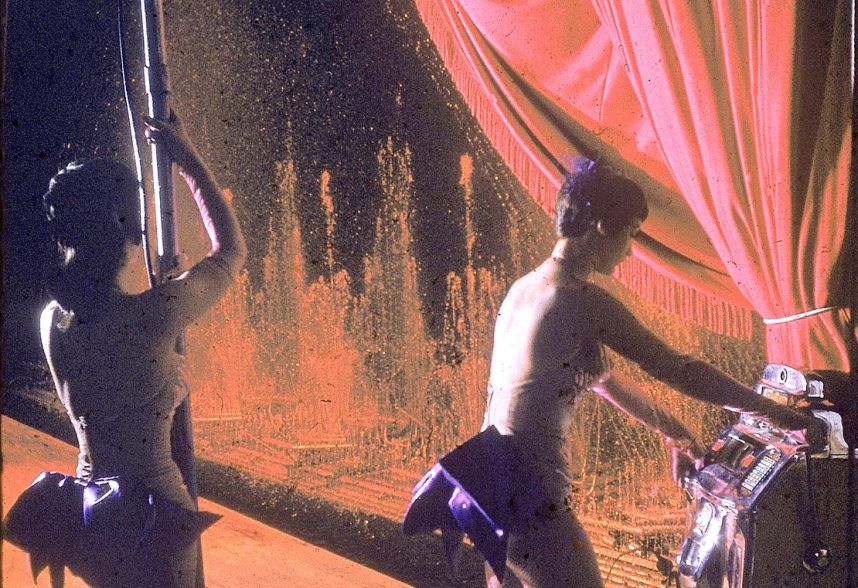
The Bellagio fountains wasn’t the first fountain show in Las Vegas. “Dancing Waters” debuted at the Royal Nevada Hotel back in 1955.
In one regard, it was actually more of a star for the brand-new resort than the fountain show has proven for the Bellagio. And that’s because it was an actual showroom headliner.
“Dancing Waters” performed nightly at the back of the Crown Room theater’s stage for customers who paid to see them, unlike all those Bellagio freeloaders. Other acts booked by the Royal Nevada, such as soprano Helen Traubel and comedian Dave Barry, actually opened for the fountains.
“While the orchestra plays and the tourists ooh and ah, the colored waters do the mambo, waltz, and skip around,” according to the UP account.
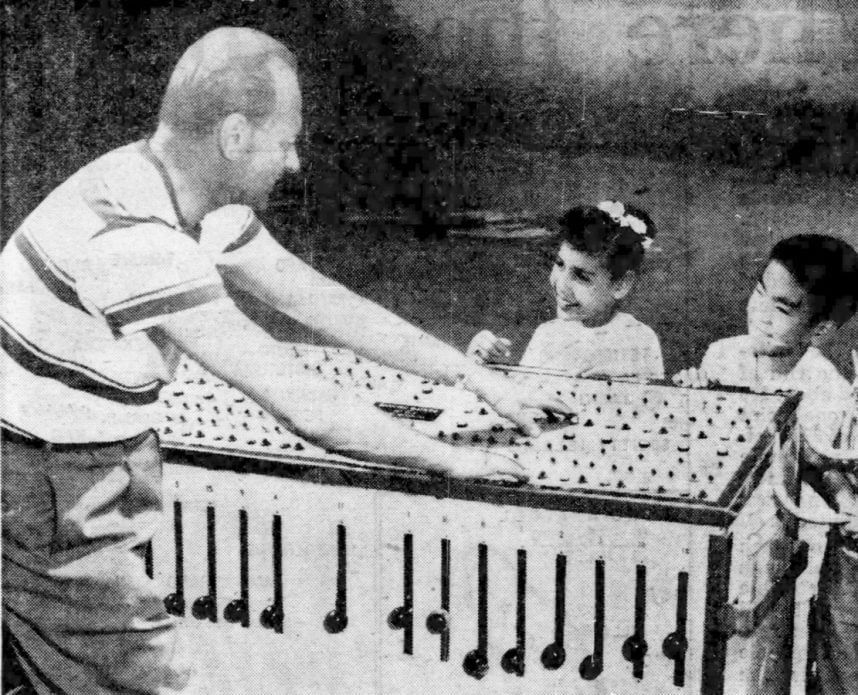
Youth of Fountain
“Dancing Waters” was invented by German engineer Otto Przystawik and Hans Hasslach, the impresario who functioned as the duo’s Steve Jobs.
Because computers weren’t up to such a task yet, Hasslach controlled the show’s five fountains, which sat over a $250K plumbing system ($5.8 million today) via a contraption with 400 switches and buttons connected to 10K feet of wiring.
Resembling a recording desk, this console commanded 19 50-horsepower engines that determined how the 4,000 jet streams revolved, swayed, and shot five tons of water up to 50 feet in the air.
“His actions are so interesting, the audiences often watches him instead of the water,” the UP reported.
“Dancing Waters” debuted at the West German Industrial Exposition in 1952. The very next year, the show headlined Radio City Music Hall, playing an eight-week run that drew 1.5 million.
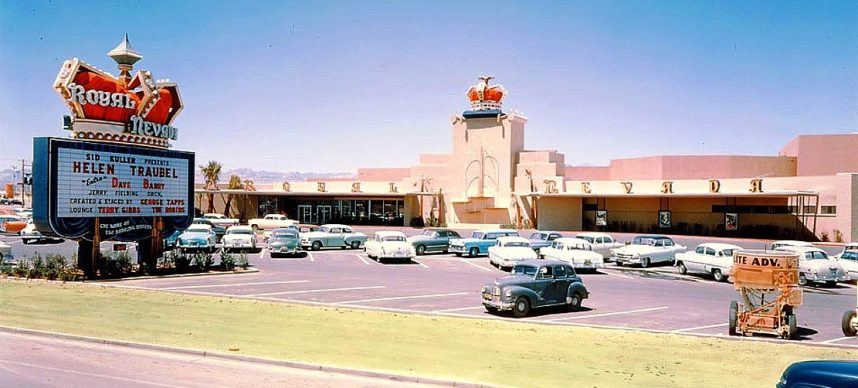
Though the Royal Nevada called itself “the Home of the Dancing Waters,” it was only one of 10-12 systems from the same company operating in the US, featuring various “fountaineers” at the helm. One returned to Radio City every Easter for six years.
Luckily for Hasslach, this gave him experience breaking the equipment down. And that’s because the Royal Nevada turned out to be no place for a permanent anything.
Battle Royal
The resort, one of four to open in Vegas within a six-week period, struggled from the very start, closing and reopening several times before finally going under, for the last time, three years later.
In 1959, the Royal Nevada was repurposed, by the operators of the resort next door, to become the Stardust Auditorium. It served as convention space and overflow hotel rooms for the Stardust until it was imploded in 2007.
Resorts World now stands in its place.
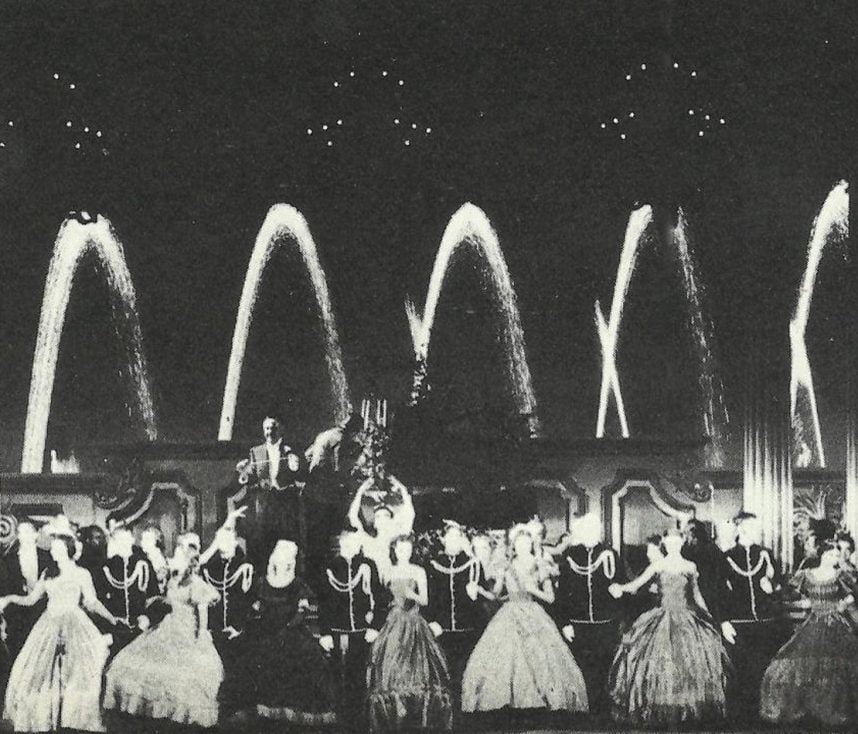
For the remainder of the ’50s, “Dancing Waters” shows entered a circuit of temporary, small-time events including the Southern California Exposition at the Del Mar Fairgrounds, the Community Fair in Ontario, Calif., and Neptune Days in Redondo Beach, Calif.
One of the systems was displayed at the 1964 New York World’s Fair, another (or perhaps the same one, who can say?) made a return visit to Las Vegas in 1969 for a special event at Circus Circus. Others were displayed at Universal Studios, Sea World, and Hershey Park.
Liberace performed with one during a 1978-79 residency at the Las Vegas Hilton.
One of the systems finally found permanent digs in a specially built Disneyland Hotel amphitheater in 1970. In 1992, that show was replaced by one called “Waltzing Waters,” which happened to have also been designed by Otto Przystawik.
What became of Hans isn’t preserved by the internet or newspaper archives. But Otto’s grandon, Michael, carries on the family tradition today by operating another fountain show called “Liquid Fireworks.”
“Lost Vegas” is an occasional Casino.org series spotlighting Las Vegas’ forgotten history. Click here to read other entries in the series. Think you know a good Vegas story lost to history? Email corey@casino.org.
Related News Articles
LOST VEGAS: Liberty’s Last Stand Was Not What It Seemed
Vegas Vic Sign Comes Slowly Back to Light
Las Vegas Casino Cyberattacks: A Timeline
Bellagio Fir Trees May Have Arrived To Replace Those Removed For F1
Most Popular
Mirage Las Vegas Demolition to Start Next Week, Atrium a Goner
Where All the Mirage Relics Will Go
Most Commented
-
Bally’s Facing Five Months of Daily Demolition for Chicago Casino
— June 18, 2024 — 12 Comments -
Chicago Pension Mess Highlights Need for Bally’s Casino
— July 2, 2024 — 5 Comments
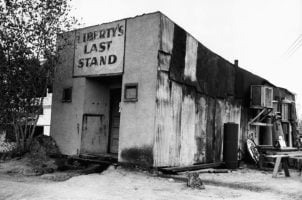

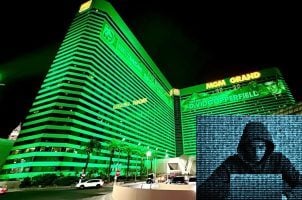
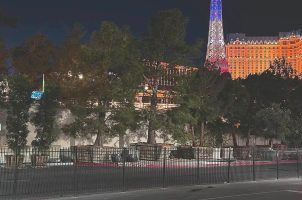











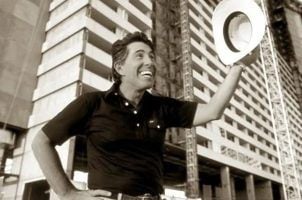
Last Comment ( 1 )
Bravo, Corey! You have managed to tell a story about Las Vegas of which I didn't know didley. Very interesting indeed.